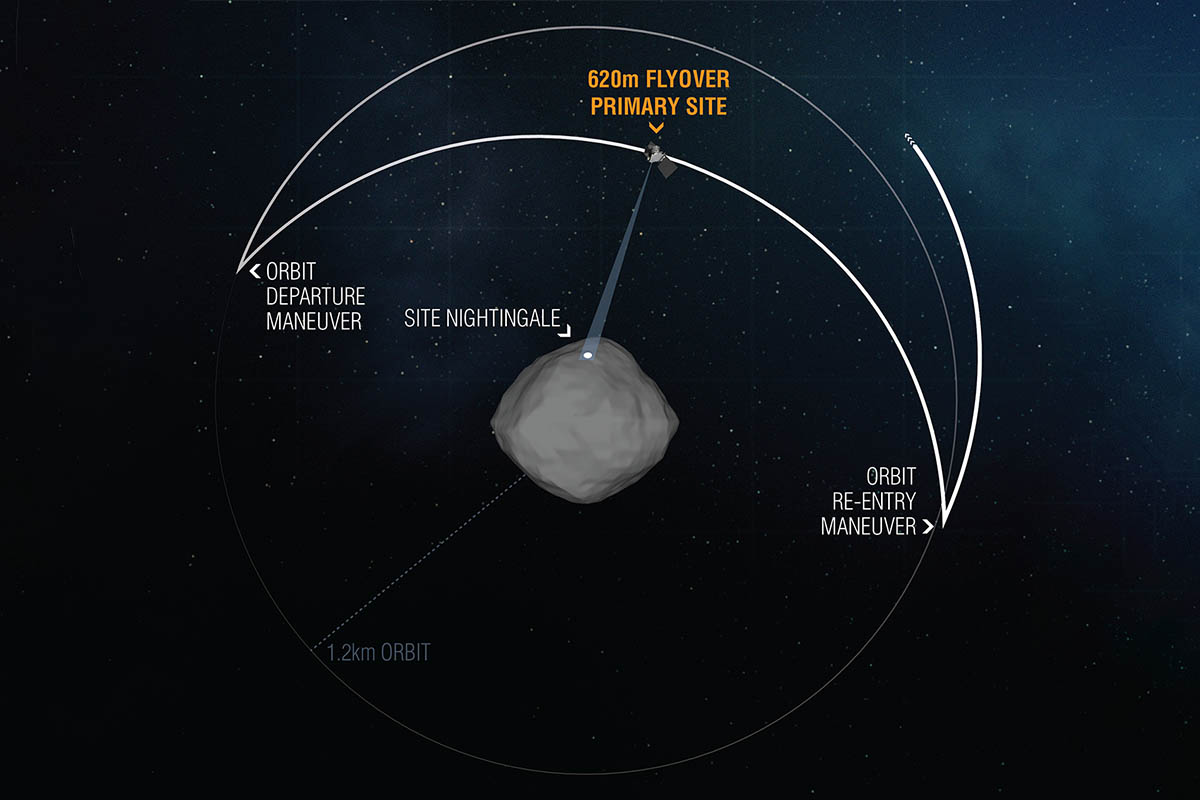During the OSIRIS-REx Reconnaissance B flyover of primary sample collection site Nightingale, the spacecraft left its safe-home orbit to pass over the sample site at an altitude of 0.4 miles (620 m). The pass, which took 11 hours, gave the spacecraft’s onboard instruments the opportunity to take the closest-ever science observations of the sample site. (NASA/Goddard/University of Arizona)
Home During the OSIRIS-REx Reconnaissance B flyover of primary sample collection site Nightingale, the spacecraft left its safe-home orbit to pass over the sample site at an altitude of 0.4 miles (620 m). The pass, which took 11 hours, gave the spacecraft’s onboard instruments the opportunity to take the closest-ever science observations of the sample site. (NASA/Goddard/University of Arizona) During the OSIRIS-REx Reconnaissance B flyover of primary sample collection site Nightingale, the spacecraft left its safe-home orbit to pass over the sample site at an altitude of 0.4 miles (620 m). The pass, which took 11 hours, gave the spacecraft’s onboard instruments the opportunity to take the closest-ever science observations of the sample site. (NASA/Goddard/University of Arizona)
During the OSIRIS-REx Reconnaissance B flyover of primary sample collection site Nightingale, the spacecraft left its safe-home orbit to pass over the sample site at an altitude of 0.4 miles (620 m). The pass, which took 11 hours, gave the spacecraft’s onboard instruments the opportunity to take the closest-ever science observations of the sample site. (NASA/Goddard/University of Arizona)


